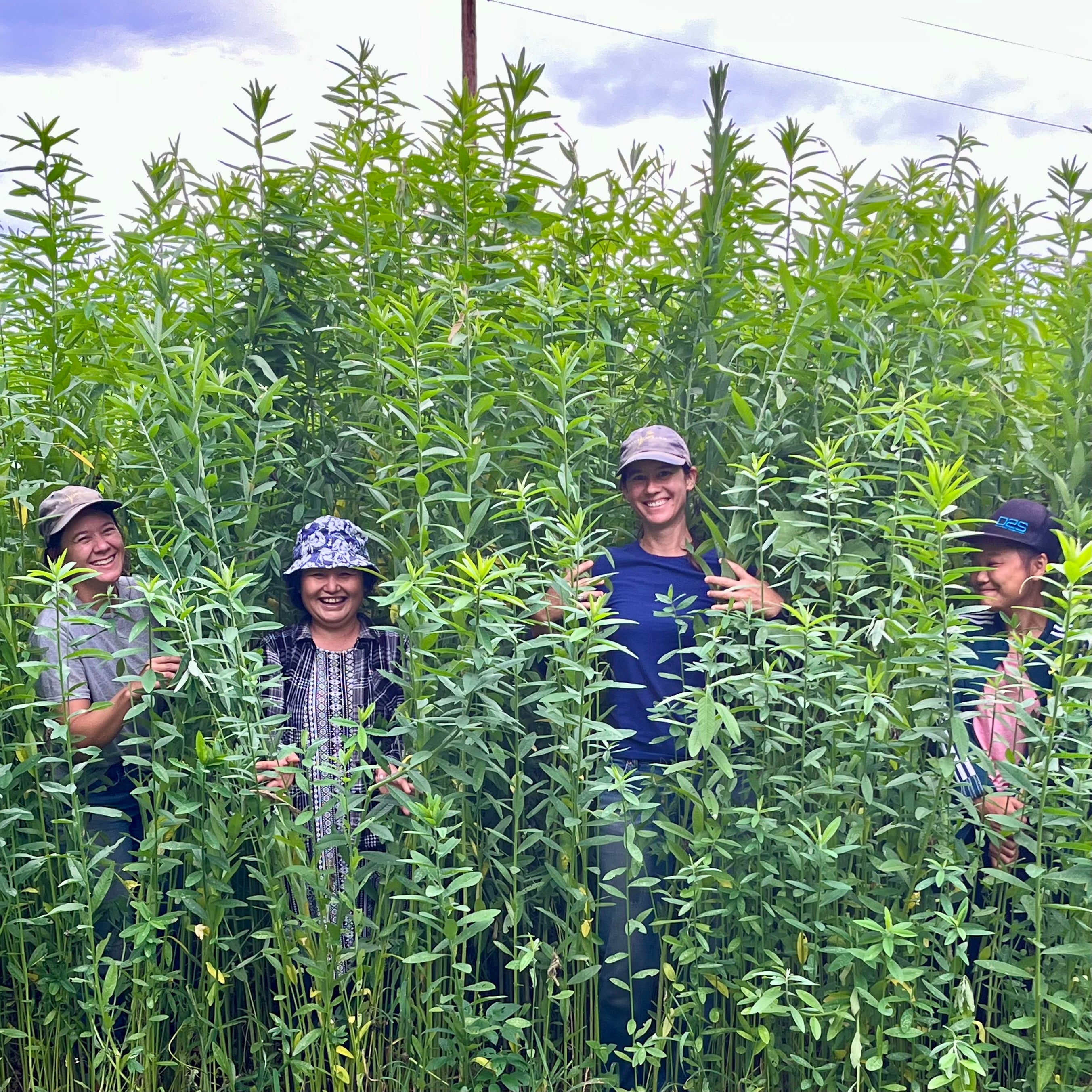
Cover Crops 8/12/22
Posted on
Georgia red clay. It’s notorious. It’s chunky. It's lifeless.
The red is a result from the affect of a warm, humid climate weathering acid crystalline rocks on rolling hills over a long period of time, but the intensely imbalanced ratio of clay to silt, sand, and organic matter is a remnant from a past marked by terribly inconsiderate agricultural practices, where all the nutrients were stripped from the soil and none were replenished.
It’s like any relationship. If you do nothing but extract value, without putting in value, the relationship will fail. Drive your car for years without an oil change. Take your spouse for granted for years without investing in their well being. Withdraw from your bank account, without making a deposit. Reciprocation is always required for any relationship to be mutually beneficial for the long term.
The earth is no different. Everything we need to survive and build a society comes from the earth. We collectively tend to approach that relationship with a very one sided perspective. We mine, drill, cut, burn, pave, harvest, and repeat while rarely giving back. It has its consequences. Think dust bowl.
Some indigenous cultures had this figured out and nourished their environment with regenerative practices to maintain a sort of dynamic equilibrium, but most large scale agriculture has a long history of extraction only resulting in soil devoid of the ability to further support and produce life. Even small scale operations add up to have a big impact (slash and burn tactics of subsistence farms in the Amazon are a surprisingly potent contributor to deforestation).
The answer to this is to replenish your soil after you harvest your crops. Compost is good, but a crucial element that is finally gaining traction on a larger scale is cover cropping. Cover crops are crops that aren’t harvested for sale, but are planted purely to give back to the soil. They are crops that prevent erosion. They shade the soil and its micro-organisms creating habitable conditions for things like worms that actively improve the soil, while also providing a great habitat for our beneficial insects and pollinators. They have root systems that excrete exudates to feed micro-organisms (who help build good soil). Those root systems can go deep to bring unavailable nutrients closer to the surface and some can even host special bacteria that create the incredibly necessary element Nitrogen in a form that plants can use to grow healthy green leaves that can in turn use the sun to create energy to feed those big juicy heirloom tomatoes you love.
Finally, when you mow them down and till or hoe them in, they add a bunch of organic matter into the soil, further feeding the micro-organisms that will in turn convert the cover crop into nutrients and organic matter that turn clay or sand into loose, rich soil filled with all the yummy nutrients that will make your cash crop or your kitchen garden, the healthiest it has ever been.
Some cover crops like Sunn Hemp, and Winter Rye have a thing called allelopathy. That means they excrete a chemical that prevents any other plant or weed from growing near it. This fact can be used to a gardener’s advantage, because after tilling in these crops, those chemicals don’t completely break down for 2 weeks. No weed seed will successfully germinate in that area, but transplanted seedlings will be fine. Therefore, it’s the perfect opportunity to plant your transplants and give them a 2 week head start over any weedy competition, so all the energy in the soil only goes to the crops you want to cultivate and none to the weeds.
We grow cover crops every year and I can’t tell you how much it has improved our soil. Areas that were clay rich and compacted used to just grow weak plants if anything and hold moisture so bad that we had puddles and ponds everywhere because clay doesn’t drain. Now, we have rich organic matter-filled soil that drains well, is loose enough for roots to easily grow through, and is filled with nutrients the plants need to live a healthy life, be strong, and fight off diseases and pests.
We tend to use Sunn Hemp and Buckwheat in the summer and Crimson Clover, Winter Peas, Vetch and Tillage Radish in the winter. These things are climate specific, so reach out to your local master gardeners club, your University extension agency, or your local garden supply place to find out which cover crops are right for your situation.
I promise it will make your garden a much happier place.
-Steve

quick links
contact us
135 Francis Hill Road
Comer, GA 30629
info@3porchfarm.com
